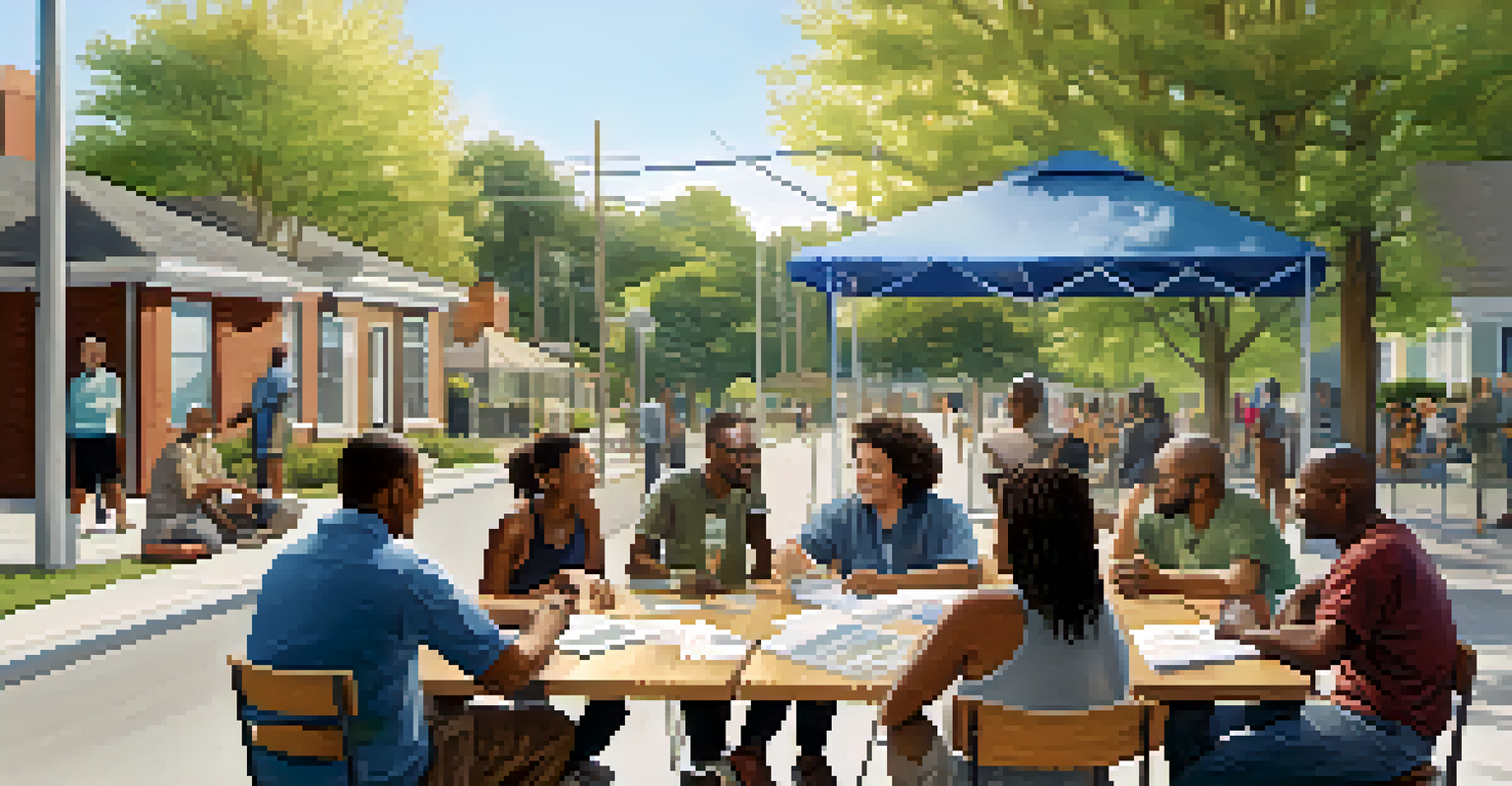The Future of Affordable Housing Development in NYC

Current Challenges in NYC's Affordable Housing Market
New York City faces a critical affordable housing crisis, with rising rents outpacing wage growth. Many residents find themselves burdened by housing costs that consume a significant portion of their income. This challenge is compounded by a lack of available units, leading to increased competition and bidding wars among potential tenants.
Affordable housing is a right, not a privilege. It is essential to the health and well-being of our communities.
The city has implemented various policies over the years, such as rent stabilization, but these measures often fall short of addressing the core issues. Developers may hesitate to invest in affordable housing due to stringent regulations and the high costs associated with construction. Additionally, the COVID-19 pandemic has strained the economy, further complicating the housing landscape.
As we look to the future, understanding these challenges is essential for devising effective solutions. The collaboration between city officials, developers, and community organizations will be crucial in creating a sustainable plan that meets the needs of all New Yorkers.
Innovative Housing Models on the Rise
Innovation is at the heart of addressing the affordable housing crisis. New models like micro-apartments and co-living spaces are gaining traction, offering more affordable options for individuals and young professionals. These designs maximize space efficiency while fostering a sense of community among residents.

Another exciting development is the concept of modular housing, which allows for quicker and more cost-effective construction. By prefabricating units in factories, developers can significantly reduce labor and material costs, translating to lower rent for tenants. This approach not only speeds up the building process but also minimizes waste and environmental impact.
Affordable Housing Crisis in NYC
New York City is grappling with a severe affordable housing crisis, characterized by rising rents that outpace wage growth and a lack of available units.
These innovative housing models showcase how creativity can play a pivotal role in affordable housing development. As more cities look to adopt similar strategies, NYC can serve as a blueprint for effective, modern solutions.
Public-Private Partnerships: A Path Forward
Public-private partnerships (PPPs) have emerged as a viable solution to the affordable housing dilemma. By combining resources and expertise, both sectors can create housing that is both affordable and sustainable. These collaborations often leverage government funding alongside private investment, allowing for comprehensive projects that benefit the community.
Innovation is the ability to see change as an opportunity, not a threat.
Successful examples of PPPs can be seen in various neighborhoods, where developers work closely with city agencies to ensure that projects meet local needs. This cooperative approach facilitates the construction of mixed-income housing, integrating affordable units within market-rate developments. Such inclusivity helps to prevent the stigmatization of low-income areas.
As we move forward, fostering strong partnerships between public entities and private developers will be essential. This collaborative spirit can lead to innovative solutions that directly address the housing crisis while benefiting all stakeholders involved.
The Role of Technology in Housing Development
Technology is transforming the way we approach housing development, making it more efficient and cost-effective. Tools like building information modeling (BIM) streamline the design and construction process, reducing errors and delays. By leveraging technology, developers can better manage resources and minimize waste, ultimately lowering costs for residents.
Smart technologies are also playing a role in affordable housing. From energy-efficient systems that reduce utility costs to smart home features that enhance living experiences, these innovations can significantly improve quality of life for tenants. Moreover, they can attract environmentally conscious residents who prioritize sustainability.
Importance of Community Engagement
Engaging local communities in housing development ensures that projects meet residents' needs and preserves the neighborhood's character.
As we embrace technological advancements, we can expect to see a more efficient housing market. Integrating these tools into the development process will not only help create affordable housing but also promote a more sustainable urban environment.
Community Engagement: Key to Success
Involving the community in housing development is crucial for success. Local residents often have valuable insights that can shape projects to better meet their needs. Engaging with the community can help ensure that new developments fit seamlessly into the existing neighborhood fabric, preserving its character while providing necessary housing.
Neighborhood meetings and feedback sessions can facilitate open communication between developers and residents. This dialogue can address concerns and foster trust, making it easier to navigate the complexities of new projects. When the community feels heard, they are more likely to support initiatives that contribute to affordable housing.
Ultimately, community engagement is about building relationships. By prioritizing these connections, developers can create a sense of ownership among residents, leading to long-term success for affordable housing projects.
Zoning Reforms and Their Impact
Zoning laws play a significant role in shaping the availability of affordable housing in NYC. Outdated regulations can limit the types of housing developments that can occur, stifling innovation. By reforming zoning laws to allow for greater density and mixed-use developments, cities can stimulate the creation of affordable units.
Recent proposals to rezone certain areas have sparked discussions about balancing development with community needs. Increased density can lead to more housing options, but it must be done thoughtfully to avoid overwhelming existing infrastructure. Striking this balance is key to fostering sustainable growth in urban environments.
Collaboration for Future Solutions
A collaborative approach among developers, city officials, and community organizations is essential for creating sustainable and inclusive affordable housing options.
As we consider the future of affordable housing, advocating for zoning reforms will be essential. These changes can unlock new opportunities for development, ultimately leading to a more diverse and affordable housing landscape.
The Importance of Sustainable Development
Sustainability is becoming increasingly important in the context of affordable housing. As the effects of climate change become more pronounced, integrating sustainable practices into housing development is essential. From energy-efficient designs to the use of renewable materials, sustainable housing can reduce costs and environmental impact.
Developers are increasingly recognizing that sustainable buildings attract residents who value eco-friendly living. These properties not only lower utility bills for tenants but also contribute to the overall well-being of the community. By investing in sustainable practices, developers can enhance the appeal of their projects while addressing the urgent need for affordable housing.

Looking ahead, the focus on sustainability will likely shape the future of housing development in NYC. Embracing these principles can lead to a healthier, more resilient urban environment that benefits everyone.
The Future: A Collaborative Vision for Affordable Housing
As we look toward the future of affordable housing in NYC, collaboration will be key. By uniting developers, city officials, community organizations, and residents, we can create a comprehensive strategy that meets the diverse needs of all New Yorkers. This collective effort will ensure that affordable housing remains a priority.
Innovative solutions and partnerships will pave the way for more inclusive housing options. The combination of technology, sustainable practices, and community engagement will drive progress and inspire new ideas. With a shared vision, we can tackle the challenges of affordable housing head-on.
In conclusion, the future of affordable housing in NYC is bright if we embrace collaboration and innovation. Together, we can build a city that provides accessible housing for everyone, fostering healthier neighborhoods and a more equitable society.